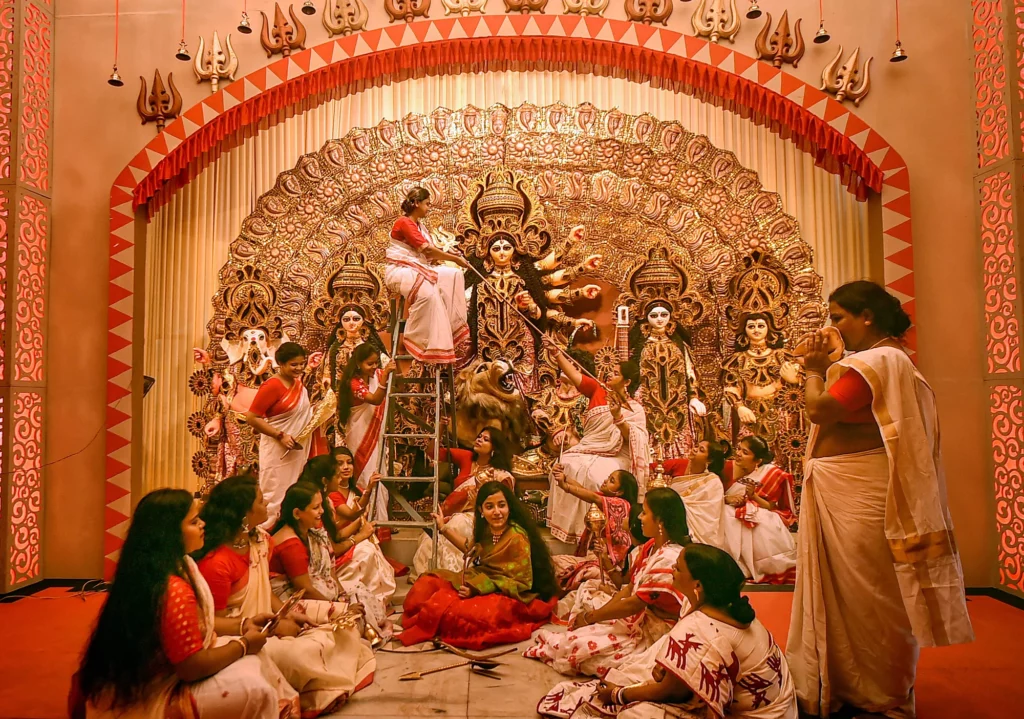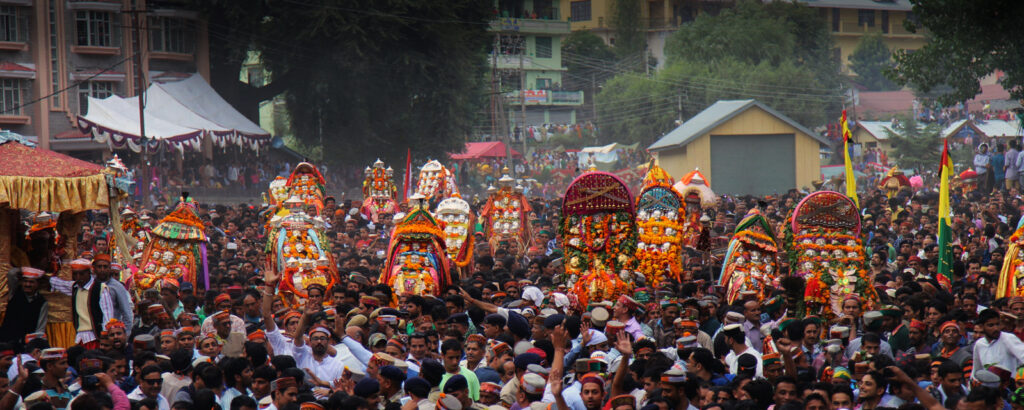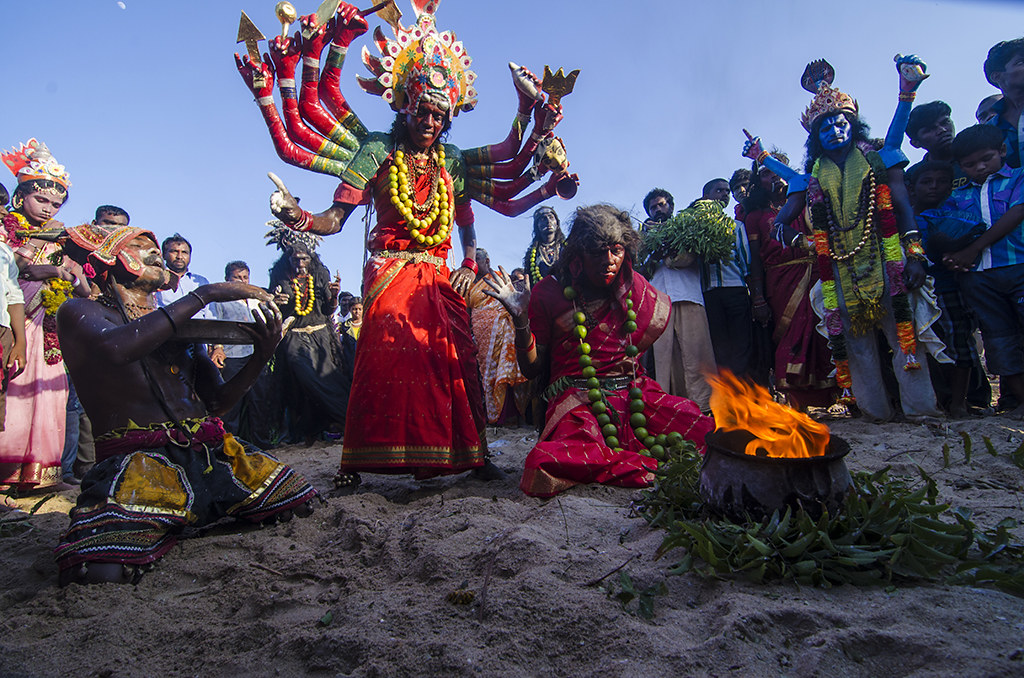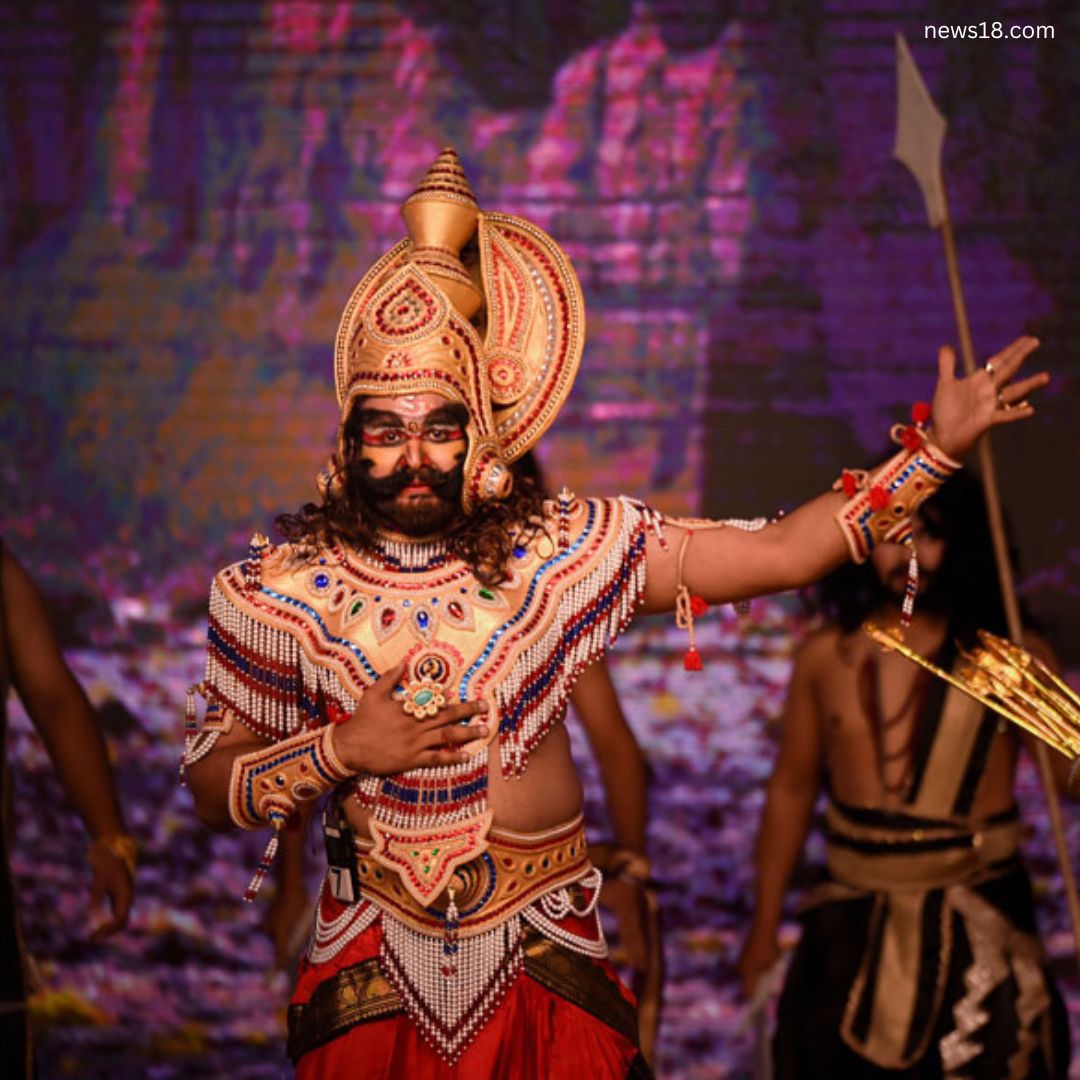What’s The Story Behind Dussehra?
The festival of Dussehra, which marks the end of the nine day Navratri festival and the tenth day of the Durga Puja, is a celebration of the triumph of good over evil.
Also Read about, What Is Halloween & Why Do We Celebrate It?
Dussehra, also known as dasara or Vijayadashmi, celebrated Ream’s victory over the demon king Ravana, who had kidnapped his wife, sita. With the help of his brother Lakshman and Hanuman, Rama invaded Lanka with an army of monkeys. The two armies engaged in a war for several days. It was really difficult for Rama to defeat the powerful Ravana. He then prayed for nine days to nine different versions of the Goddess Durga and grew strong enough to overcome Ravana. The first nine days are known as Navratri, and the tenth, on which Ravana is defeated, is known as Dussehra. Another popular mythology in the eastern and northern Indian states is that Goddess Durga slayed the monster Mahishasura to bring peace to the world. Goddess Durga destroys Mahishasura on the tenth day, and that day is celebrated as Vijayadashmi.

Did You Know?
The words Dus and Ahara combine to make the term “tenth day”, as “dus” means “ten” and “Ahara” means “day.” Another interpretation derives from the festival’s mythology, in which “Dus” stands for the 10 heads of Ravana, or bad or evil, and “hara” is “to defeat.”
Different Ways Of Celebrating Dussehra
Navratri and Dussehra are widely observed holidays in India. Here are some interesting ways that people celebrate this festival!
Rangoli – Art Form
Around the end of Dussehra till the beginning of Diwali, people in India use the art form of rangoli. It is a design drawn on the sidewalk or ground in front of a house with coloured chalk or powder, and marigold flowers. Rangoli, which means “rows of colours” in Sanskrit, is a design used to entice the goddess of fortune and prosperity.

Ramlila – Theatre Plays
Ramlila, which translates to “Rama’s play,” is a presentation of the Ramayana epic including song, storytelling, recital, and dialogue in a number of scenes. It is performed all across India during the Dussehra. Hundreds of towns, villages, and settlements organise celebrations and outdoor fairs honouring Rama’s victory over Ravana.

Lighting Diyas
Diyas represent virtue and purity, and burning one signifies escaping the shadows and entering into the light. The people of Ayodhya lit diyas to welcome Lord Rama after 14 years of exile, to celebrate his victory over Ravana. The oil in the Diya symbolises human sins. As a result, when you light a Diya, the evil is essentially “burnt away”.

Diversity In Dussehra Celebration In India
Dussehra is celebrated in many different and diverse ways across the country. Some of the unique ways in which Dussehra is celebrated in different parts of
Kolkata, West Bengal
The Bengali community celebrates Dussehra with Durga Puja, which transforms entire state into a dynamic and lively hub of culture. Vijayadashami is celebrated on the tenth day of the famous Durga Puja. On this day, married women offer vermilion and sweets to the goddess. They also put vermilion on each other’s cheeks. At night, the idols of the goddess are taken to nearby rivers or water bodies to be immersed.

Bastar, Chhattisgarh
Dussehra is devoted to tribal deities and has nothing to do with the defeat the of Ravana. The festival is celebrated for 75 days and is believed to be the longest festival in the world.

Kullu, Himachal Pradesh
The Kullu Dussehra, which is well-known all over the world, is held in the Kullu Valley of Himachal Pradesh. Around 200 local deities from nearby villages are brought to participate in a religious procession. Another unique aspect is that these celebrations in Kullu begin on Vijayadashami, the day when Dussehra festivities end in India. Further, on the last day of the celebration, a pile of thorn bushes is burnt to depict the burning of Lanka.

Mysore, Karnataka
Dussehra in Mysore is known as Mysuru Dasara and it is one of the most spectacular celebrations in India. As a part of the celebration, Mysore Palace is illuminated with 1,00,000 light bulbs. Additionally, the city destroys the effigies of Meghnad, Ravana, and Kumbhkaran.

Almora, Uttarakhand
Almora celebrates Dussehra with a parade of demons. The mountain streets of this small town in Uttarakhand are filled with various villains from The Ramayana. They’re made by local people and are paraded across the town before burning them. A total of 33 effigies of Ravana’s family members are burned to celebrate Dussehra.

Kulasekarapattinam, Tamil Nadu
The Dussehra celebrations at a 300-year-old temple of Goddess Kali, in the village Kulasekarapattinam are very unique. People are required to dress up as gods and goddesses. The people dance holding flaming clay pots throughout the night and end the festival with an enactment of slaying of Mahishasura on the beach.

Did You Know?
Ravana is a symbol of evil for most people across India. However, in Mandore, Rajasthan, people celebrate him as a deity. It is believed that Ravana’s wife Mandodari is from this town. While, people remember Ravana for his evil deeds, here he is celebrated for his genius achievements in the field of astrology and ayurveda.
There are some temples in Uttar Pradesh, Rajasthan, Madhya Pradesh, and Andhra Pradesh that worship Ravana as a deity.
Besides India, Dussehra is also celebrated in Nepal, Bangladesh, and Sri Lanka.
Different Ram Leelas In India
Ram Leela literally means Rama’s play. Ram Leela is an integral part of Dussehra celebrations in India. It retells the epic story of Ramayana. Many people go to watch Ram Leela. According to legend, Tulsidas, the author and composer of Ramcharitmanas, started the tradition of Ram Leela. Following are some of the most famous and oldest Ram Leela performances in India.
Kumaon Ram Leela
Kumaon Ram Leela in Uttarakhand is 150 years old and has been declared by UNESCO as the world’s longest running opera. It is also a part of the World Cultural Heritage List. It is also known as the Kumaoni Ram Leela and was first started in 1860 at Almora’s famous Badreshwar temple. From there it spread to other parts of Uttarakhand like to Nainital, Bageshwar, and many other places. Ram Leela in Kumaon is a musical festival rather than a staged performance. In Ku-maon’s Ram Leela, the focus is more on singing than acting.

Another interesting aspect about the Kumaoni Ram Leela is that for the last 20 years the roles of Rama and Lakshman are performed by girls!
Ramnagar Ram Leela
Ramnagar Ram Leela is known as the oldest and the best Ram Leela in the world. It was started almost 200 years ago and the first one was performed in 1830. UNESCO has rec-ognised Varanasi’s Ram Leela as a World Heritage. This particular Ram Leela goes on for 31 days and the whole city of Varanasi turns into a big stage to tell Rama’s life story. One unique aspect about the Ramnagar Ram Leela is that different scenes are enacted in different parts of the city. In Ram-nagar Ram Leela, the artist’s perform the entire epic without the help of any sound technology such as microphones or speakers. They use their voice to perform their scenes and it is performed in natural light as well.

Delhi Ram Leela
Delhi is known for various different Ram Leela performanc-es. This year, Shriram Bharatiya Kala Kendra is performing their 66th annual edition of Ram Leela called ‘Shri Ram’. Another well-known Ram Leela in Delhi is by Luv Kush Ram-lila Committee. Their theme for this year is Ayodhya’s Ram Mandir. This Ram Leela is performed on the grounds of the Red Fort.


Did You Know?
A group of 30 women from different villages of Garhwal region in Uttarakhand organise an all women Ram Leela performance, where the role of male characters are also performed by them.
Watch full video on, Tiger Is The Largest Wild Cat In The World

